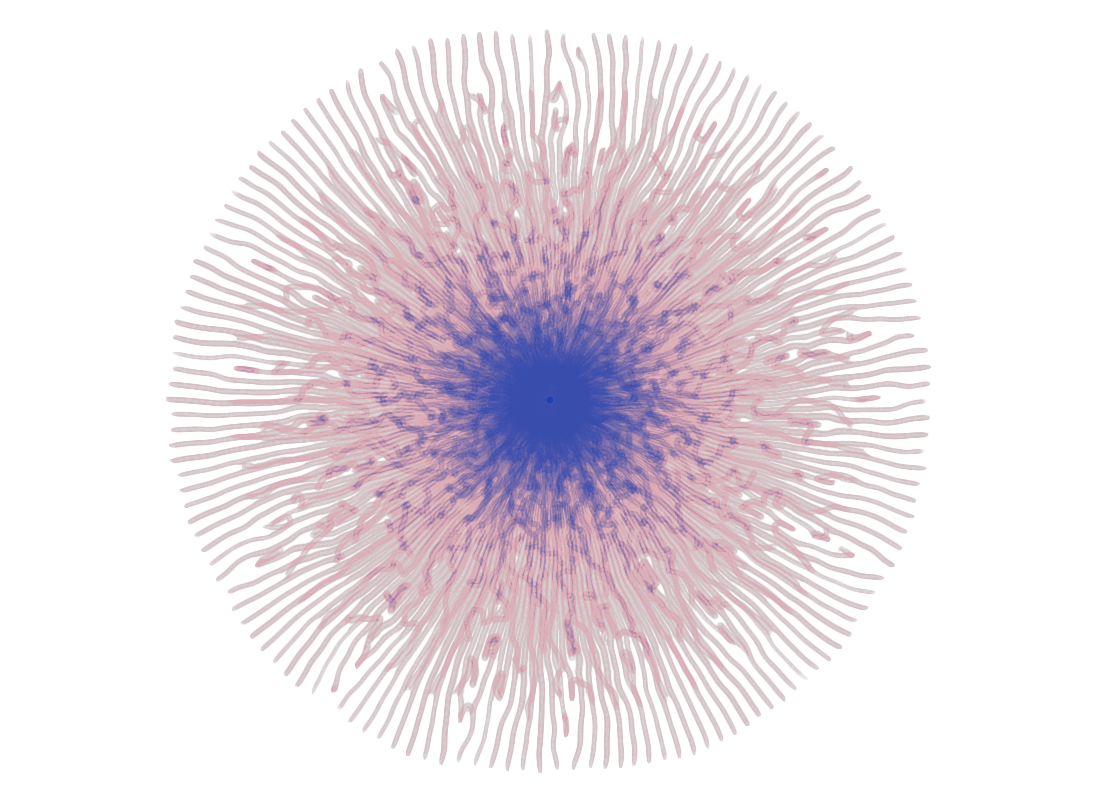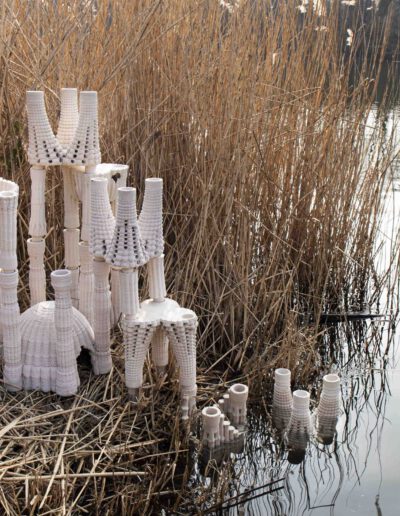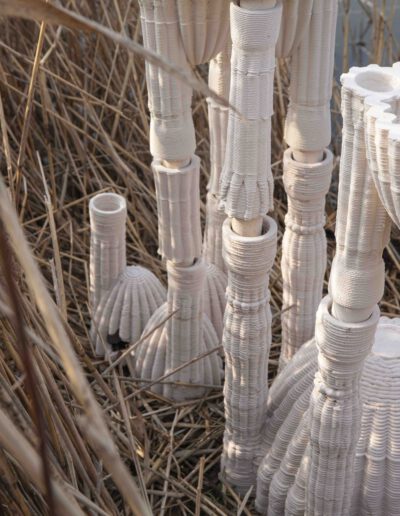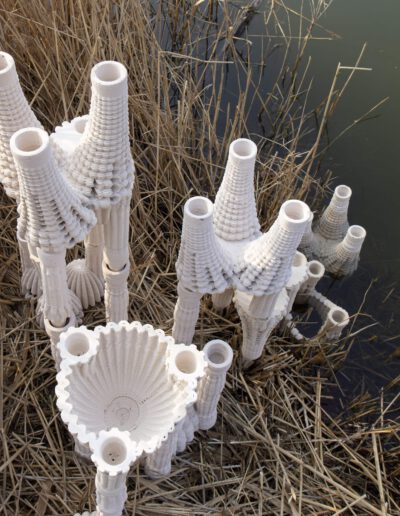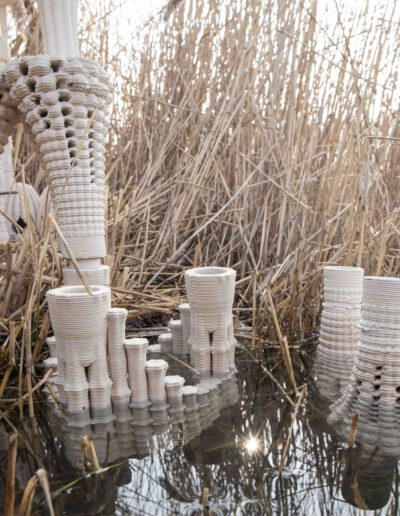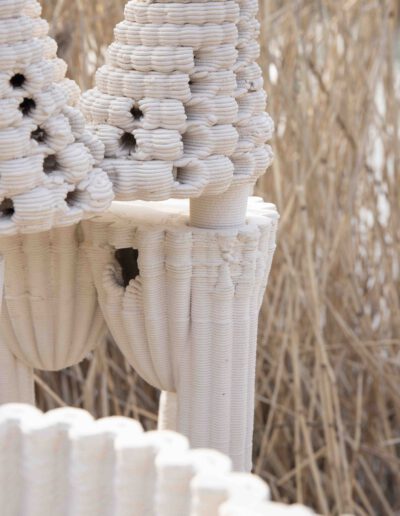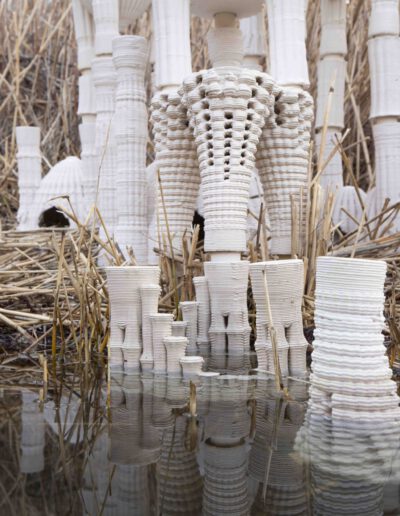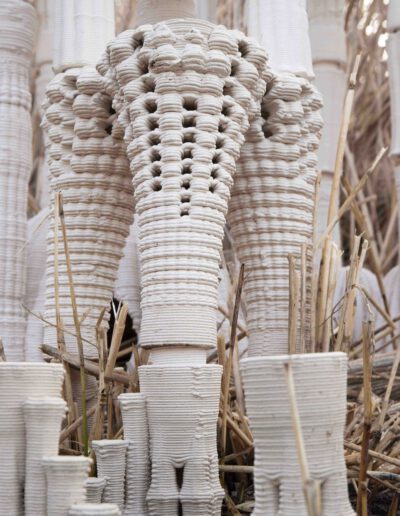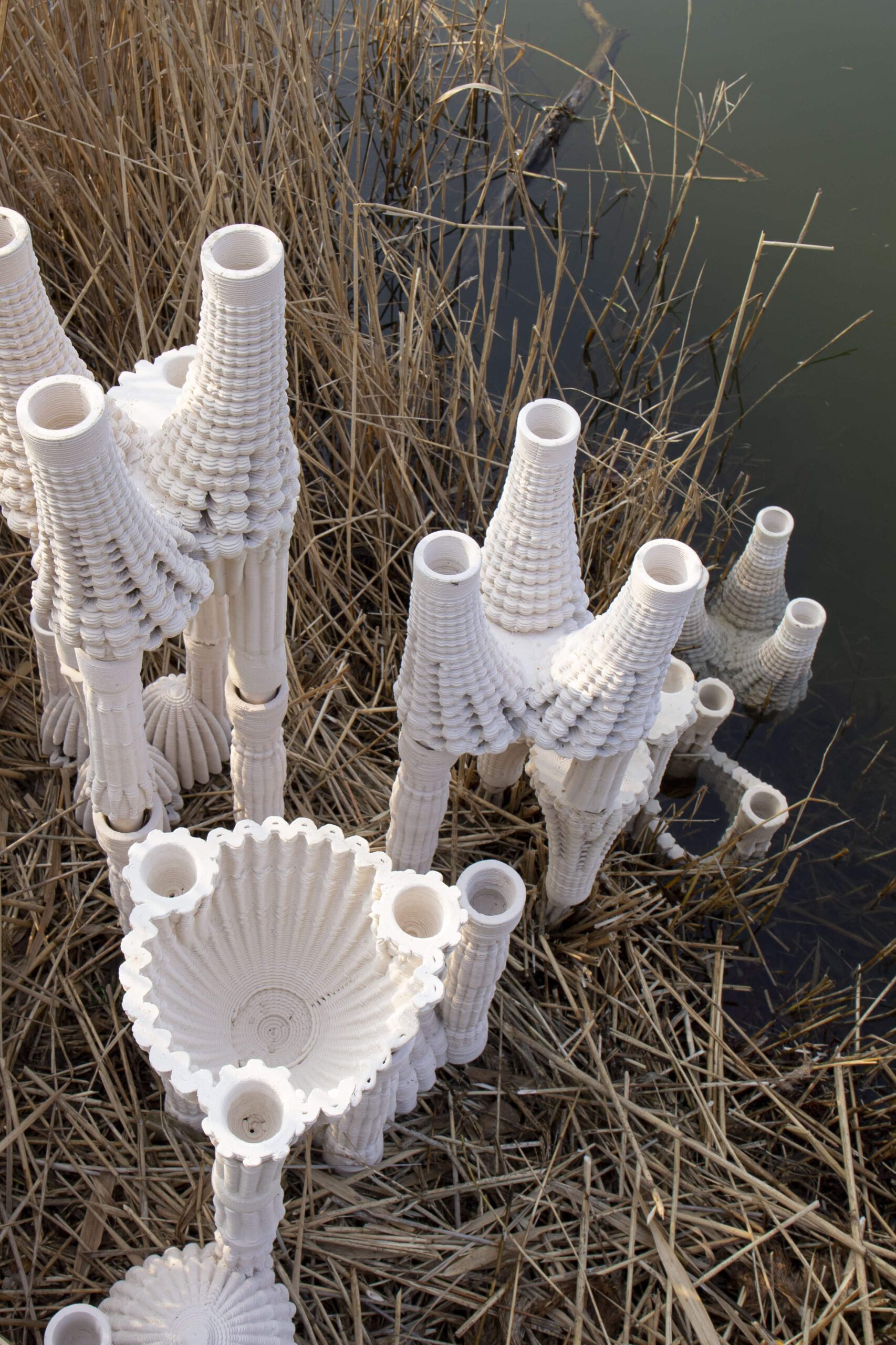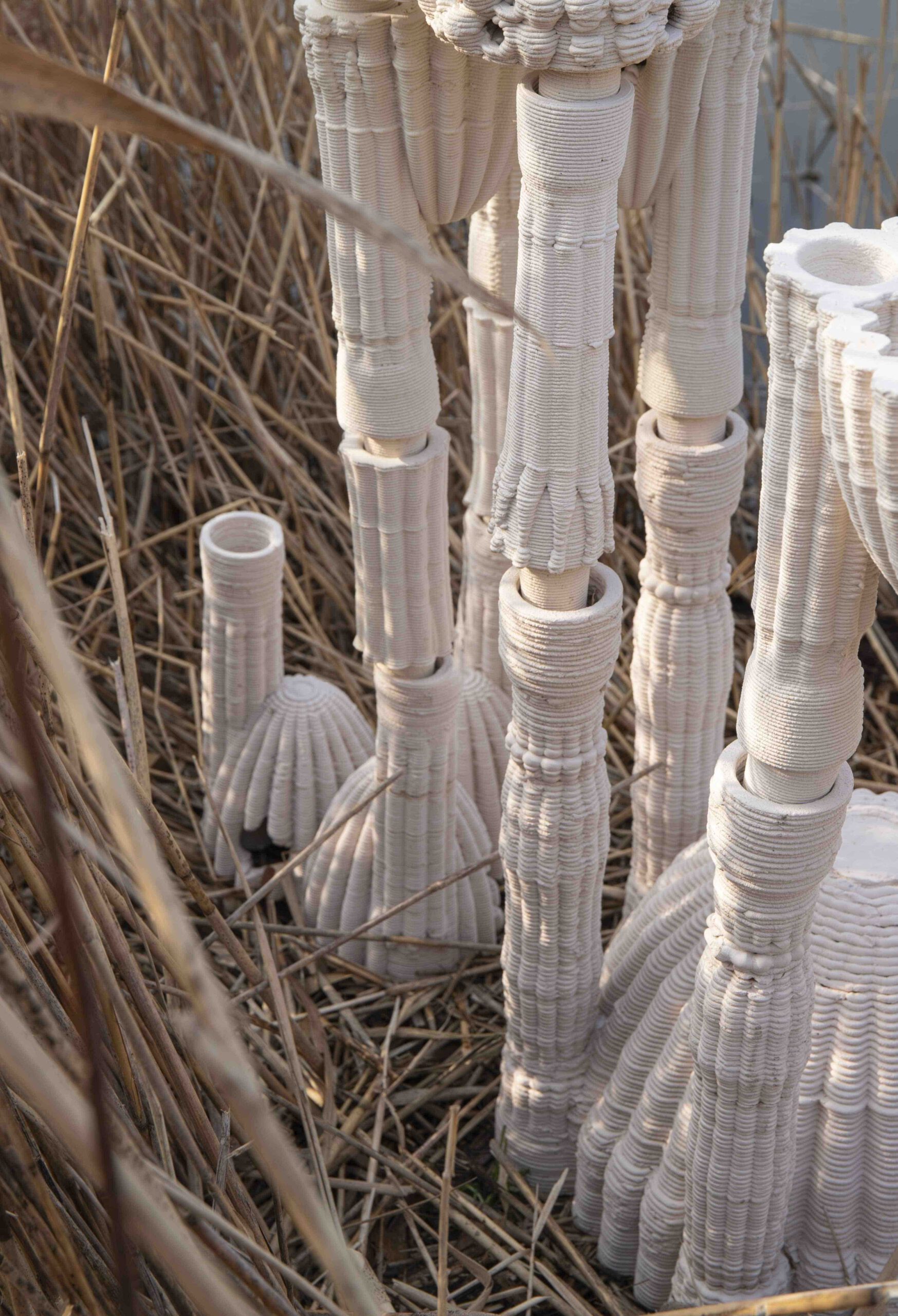symbiotic spaces
multispecies habitat for urban wildlife
modular ceramics 3D printed in clay
Multispecies habitats for urban wildlife, 3D printed in clay. Ceramic modules, “growing” from the water to the ground and into the air, offering housing opportunities to a broad variety of species: water animals, maller mammals, wild insects and birds. The first model temporarily installed in Hildesheim, Germany.
Film: Paul Knopp
Symbiotic Spaces searches for a way to create places in urban areas, to provide habitats for non-human species and which can be a meeting point for different forms of life. Donna Haraway proposes in her book „Staying with the Trouble“ from 2016, to make kin with different forms of life, to actively engage in relationships with non-human species. Through the processes which drive evolution, the living beings on the planet are connected and sustain eachother, but at the moment most human societies take part in extracting from the ecosystems and extinct rapidly so many forms of life.
Expecially in cities, where humans control the enviroument so rigorously, there is still a lot of potential to actively engange with resident wildlife, to enable public or semi-public spaces to make an experience with other species. Being culturally reintigrated in the idea of nature and not to think culture or technology as outside of the the wild ecosystems, will be crucial for a sustainable future and needs experimentation, searches and questions.
„The machine is us, an aspect of our embodiment“ writes Donna Haraway in her Cyborg Manifesto from 1985 and thinks technology as part of the natural human process and also humans as part of nature. Symbiotic Spaces is involving Robots and local, wild clays to search for a bio-friendly way of building and to integrate digital manufacturing into the current paradigm shift in arts and design. Ceramic modules, „growing“ from the water to the ground and into the air, offering housing opportunities to a broad variety of species: water animals, smaller mammals, wild insects, and birds. The forms are inspired by a slow observation of non-human architectures in the forest, informed by natural algorithms and the viscocity of wild, local clay. Every city has its own color colors of soil, so a white clay was chosen to visualize a neutral example. To carefully take a piece of the lokal earth and shape it, so that humans and non-humans can read and interact with the architectonical structures. 3D Clay-Printing in this case is medium to reconsider the nature of technology, the use of materials and the question, which needs and perspectives should be involved in contemporary, technological output. Humans need different forms of life to be alive and to connect actions within a bigger context, so Symbiotic Spaces trys to strenghten the searches for empathic relationships with our non-human relatives.
